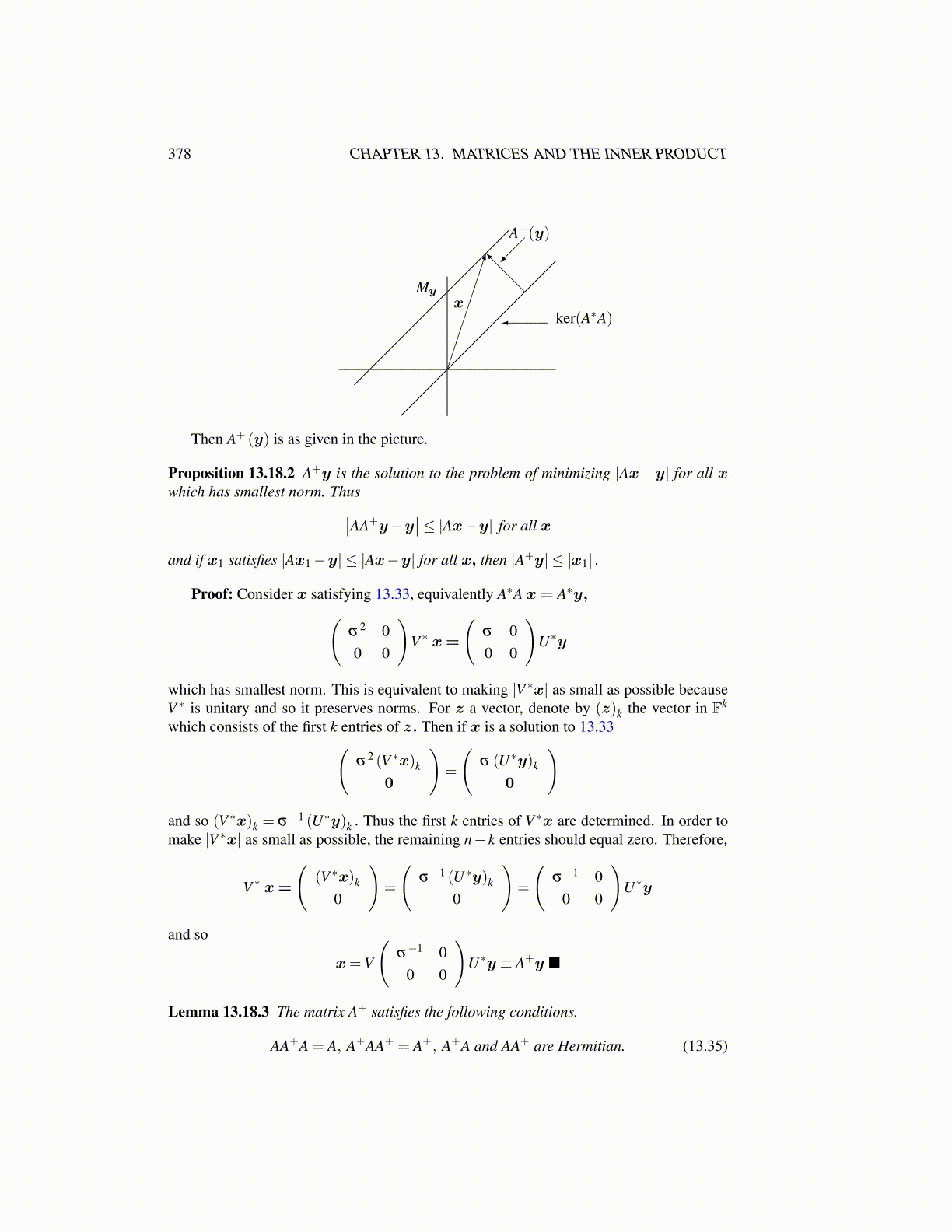
378 CHAPTER 13. MATRICES AND THE INNER PRODUCT
Myx
A+(y)
ker(A∗A)
Then A+ (y) is as given in the picture.
Proposition 13.18.2 A+y is the solution to the problem of minimizing |Ax−y| for all xwhich has smallest norm. Thus∣∣AA+y−y
∣∣≤ |Ax−y| for all x
and if x1 satisfies |Ax1−y| ≤ |Ax−y| for all x, then |A+y| ≤ |x1| .
Proof: Consider x satisfying 13.33, equivalently A∗A x= A∗y,(σ2 00 0
)V ∗ x=
(σ 00 0
)U∗y
which has smallest norm. This is equivalent to making |V ∗x| as small as possible becauseV ∗ is unitary and so it preserves norms. For z a vector, denote by (z)k the vector in Fk
which consists of the first k entries of z. Then if x is a solution to 13.33(σ2 (V ∗x)k
0
)=
(σ (U∗y)k
0
)
and so (V ∗x)k = σ−1 (U∗y)k . Thus the first k entries of V ∗x are determined. In order tomake |V ∗x| as small as possible, the remaining n− k entries should equal zero. Therefore,
V ∗ x=
((V ∗x)k
0
)=
(σ−1 (U∗y)k
0
)=
(σ−1 0
0 0
)U∗y
and so
x=V
(σ−1 0
0 0
)U∗y ≡ A+y ■
Lemma 13.18.3 The matrix A+ satisfies the following conditions.
AA+A = A, A+AA+ = A+, A+A and AA+ are Hermitian. (13.35)